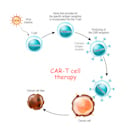
Update on Heart Health
February is American Heart Month— (yes, it’s time to get your red on!) It is also an ideal time to review recent advances responsible for saving countless lives.
Recent Advances in Cardiac Medicine
Cardiovascular Disease Overview
From the American Heart Association (AHA) 2016 Executive Summary: Heart Disease and Stroke Statistics revealed that, for the first time since 1983, more males (402,851) died of Cardiovascular Disease (CVD) than females (398,086). Overall, deaths related to CVD declined by a whopping 28.8% from 2003-2013. While this is a great accomplishment, our work isn’t over yet. An interesting outcome from a recent Veterans Health Administration study, indicated that women with CVD were less likely than men to receive statins (57.6% versus 64.8%) or high-intensity statins (21.1% versus 23.6%) as recommended in the 2013 American College of Cardiology/AHA cholesterol management guidelines (Mozaffarian, Benjamin, Go, Arnett, Blaha, Cushman, et al., 2016). Additionally, only 66.5% of eligible patients with post-acute coronary syndrome received an optimal evidence-based combination of medications. This awareness sheds light on the poor adoption of evidence-based therapies.
Hypertension
The AHA’s 2016 Executive Summary data from 2009 to 2012 reveals that 32.6% of US adults ≥20 years of age have hypertension, representing approximately 80 million adults. Among US adults with hypertension, 54.1% were controlled, 76.5% were currently treated, 82.7% were aware they had hypertension and 17.3% were undiagnosed. From 2003 to 2013, the actual number of deaths related to high blood pressure rose 34.7% (Mozaffarian, Benjamin, Go, Arnett, Blaha, Cushman, et al., 2016). Increasing primary care efforts to prevent, identify and treat hypertension continues to be a focus for 2016.
Cardiopulmonary Resuscitation Guidelines
The new rate of chest compressions is 100 to 120 compressions, or pushes, per minute, compared to “at least 100” in previous guidelines, according to the AHA. For adolescents and adults, a rescuer should push down at least 2 inches, but no more than 2.4 inches on the chest, compared to at least 2 inches in previous guidelines.
Cardiac Rehabilitation
A recently published meta-analysis confirms that exercise-based cardiac rehabilitation improves cardiovascular mortality, reduces in-hospital admissions and enhances quality of life. These benefits seem to be consistent throughout intervention types and were independent of study quality, setting, and publication date (Anderson, Oldridge, Thompson, Zwisler, Rees, Martin, et al., 2016).
Sex-Specific Troponin Measures
Most facilities utilize standard metrics for measuring troponin levels, regardless of a patient’s demographic information. New literature notes that a sex-specific cut-off actually improved identification of women but not men at risk for myocardial infarction (MI), emergency coronary revascularization or death within one year (Giannitsis, 2016).
Ondansetron and Congenital Heart Defects
Ondansetron, a potent antiemetic agent, has been widely covered in the media this past year. Concerns regarding its fetal safety profile have been raised in the literature. In a 2016 meta-analysis, findings suggest that first trimester ondansetron exposure is not associated with an overall statistically significant increased risk of congenital malformations or cardiovascular defects although prospective studies are necessary to confirm these findings (Balayla & D'Alton, 2016).
For more on topics related to the Cardiovascular system look for these courses on RN.com:
“Interpreting AV (Heart) Blocks: Breaking Down the Mystery,” “Understanding Heart Failure” and “Heart Failure Review and Medication Adherence Strategies for APRN’s.”
References:
- Anderson, L., Oldridge, N., Thompson, D. R., Zwisler, A. D., Rees, K., Martin, N. & Taylor, R. S. (2016). Exercise-based cardiac rehabilitation for coronary heart disease: Cochrane systematic review and meta-analysis. Journal of the American College of Cardiology, 67(1), 1-12.
- Balayla, J., & D'Alton, M. E. (2016). 311: First trimester ondansetron exposure and the risk of major congenital malformations and heart defects: a systematic review and meta-analysis. American Journal of Obstetrics & Gynecology, 214(1), S177.
- Giannitsis, E. (2016). Sex-specific troponin measures for diagnosis of acute coronary syndrome. Heart, 102(2), 91-92.
Mozaffarian, D., Benjamin, E. J., Go, A. S., Arnett, D. K., Blaha, M. J., Cushman, M., ... & Howard, V. J. (2016). Executive Summary: Heart Disease and Stroke Statistics - 2016 Update A Report from the American Heart Association. Circulation, 133(4), 447-454.
© 2016. AMN Healthcare, Inc. All Rights Reserved.
Biography:
Lindsey Ryan graduated from Point Loma Nazarene University in San Diego, California with both her BSN and MSN. Lindsey’s clinical experience ranges from Acute to Critical Care where she has functioned in the roles of frontline staff and CNS. Most recently, Lindsey has been responsible for leading efforts associated with new knowledge and innovation including interdisciplinary quality initiatives, evidence-based practice projects and clinical research. Lindsey is a member of the American Association of Critical Care Nurses (AACN) and National Association of Clinical Nurse Specialists (NACNS).




